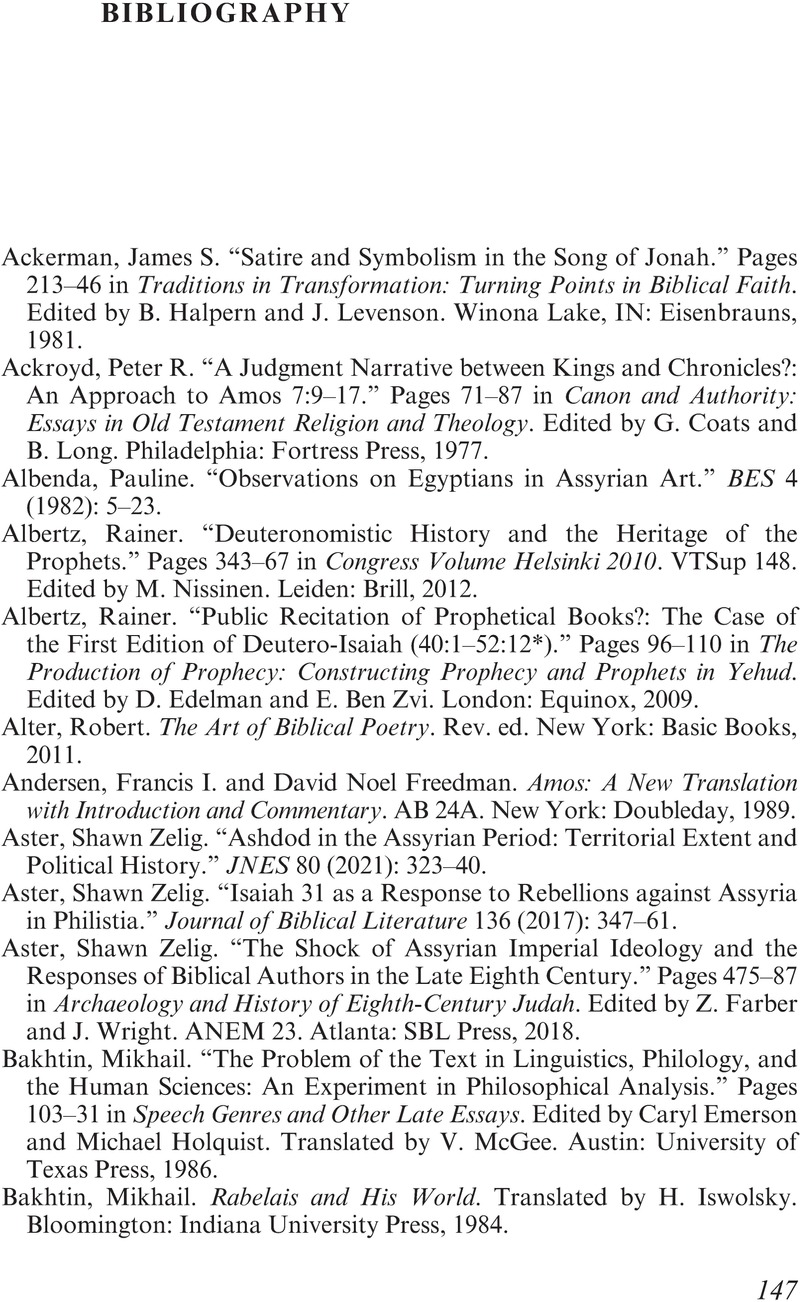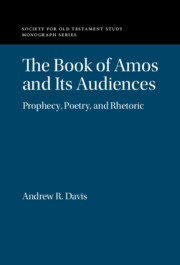Book contents
- The Book of Amos and Its Audiences
- Society for Old Testament Study
- The Book of Amos and Its Audiences
- Copyright page
- Dedication
- Contents
- Acknowledgments
- Abbreviations
- 1 Introduction
- 2 Overhearing in Lyric Poetry, Roman Satire, and Biblical Poetry
- 3 A Moveable Feast
- 4 Foreign Address and Home Audiences in Amos 3:9–11
- 5 Scribal Prophecy and the Post-Exilic Audience of Amos 7:10–17
- 6 Epilogue
- Bibliography
- Index of Ancient Sources
- Index of Modern Authors
- Index of Subjects
- References
Bibliography
Published online by Cambridge University Press: 08 June 2023
- The Book of Amos and Its Audiences
- Society for Old Testament Study
- The Book of Amos and Its Audiences
- Copyright page
- Dedication
- Contents
- Acknowledgments
- Abbreviations
- 1 Introduction
- 2 Overhearing in Lyric Poetry, Roman Satire, and Biblical Poetry
- 3 A Moveable Feast
- 4 Foreign Address and Home Audiences in Amos 3:9–11
- 5 Scribal Prophecy and the Post-Exilic Audience of Amos 7:10–17
- 6 Epilogue
- Bibliography
- Index of Ancient Sources
- Index of Modern Authors
- Index of Subjects
- References
Summary

- Type
- Chapter
- Information
- The Book of Amos and its AudiencesProphecy, Poetry, and Rhetoric, pp. 147 - 167Publisher: Cambridge University PressPrint publication year: 2023



